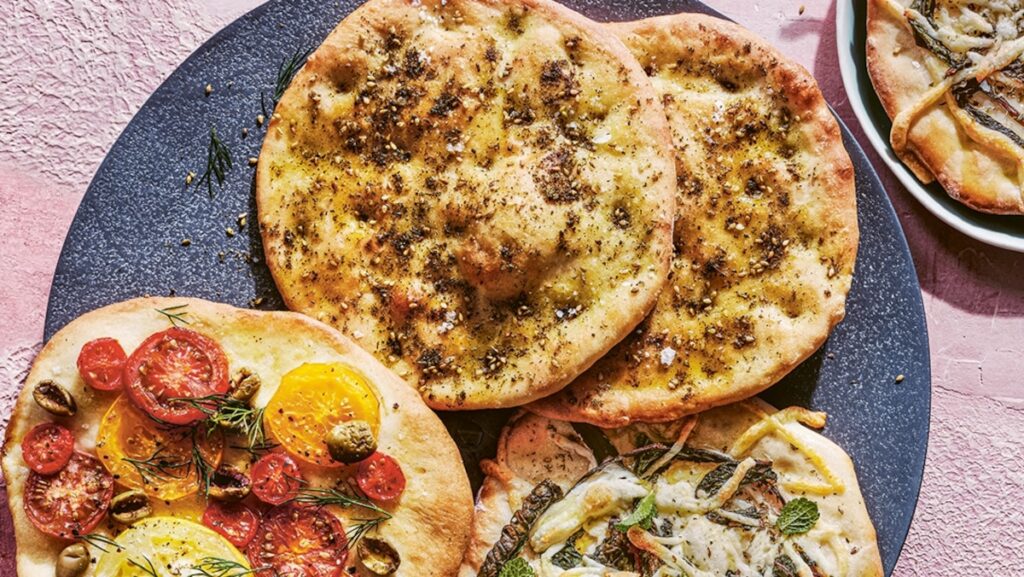This article was produced by National Geographic Traveler (UK).
With fertile soil, 140 miles of coastline and a location in the heart of the Middle East, Lebanon’s cuisine has been shaped by traders, conquerors and colonizers: the Phoenicians shared their love of seafood, the Romans planted olive groves and vineyards, the Ottomans brought barbecue, and more recently, Lebanon was colonized by the French, who left their mark on its tables with delicate pastries and haute cuisine techniques.
Lebanon’s neighbors are just as important: it borders the Mediterranean Sea to the west, Syria to the north and east, and Israel to the south. Similar influences permeate cuisines throughout the region, and many of the dishes served in Lebanese homes can also be found in neighboring countries, each with their own regional twist.

Salma Hage is the author of five cookbooks, including The Levantine Vegetarian.
Photo by Halala Hamilton
Lebanese home cooking brings out the flavours of beans, pulses and grains with spices and vegetables, such as slow-caramelized onions and jammy tomatoes. Fasolia is a rustic stew of white beans, tomatoes and garlic, luxuriously drizzled in olive oil, while hearty mujadara combines lentils, rice and caramelized onions. Hummus is popular here, as it is throughout the Levant.
Garlic, olive oil, nuts and spices such as cumin and cinnamon are woven into the dishes to give them a taste of summer, while herbs are treated like vegetables, added generously to tabouli or served as table garnishes.
Lebanese families often serve fresh fruit for dessert, but on hot days bouza (stretchy ice cream) is popular; its texture is like that of hot mozzarella cheese. It is made from sarab, an ingredient made from the root of the orchid. Crispy, nutty baklava is popular to accompany coffee, which is enhanced by the addition of cardamom during the brewing process.
3 Lebanese dishes you must try
1. Manakish
These flatbreads are served warm for breakfast or lunch. The etymology of the name means “carved” and the surface is often indented to concentrate flavors. Popular options are with aromatic za’atar and olive oil, or cheese and vegetables.
2. Knafeh
Found throughout the Middle East, this dessert is made from delicately shredded phyllo dough layered with mild cheese or clotted cream, then dipped in hot sugar syrup, giving it a crunchy exterior and melty centre.
3. Sambusek
These fried pastries can be stuffed with all kinds of vegetables, cheeses and herbs — I like to make a version with equal parts spinach, dill, coriander and parsley, garnished with salted sheep’s cheese — and are often served as part of a meze before the main course, along with herbs, dips and flatbreads.
Featured in the June 2024 issue of National Geographic Traveler (UK).
Click here to subscribe to National Geographic Traveller (UK) magazine (only available in some countries).


